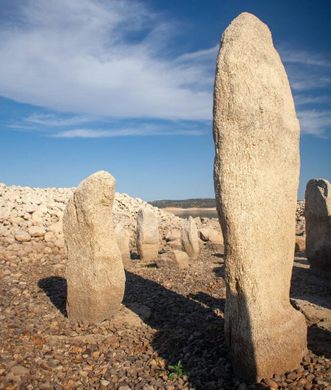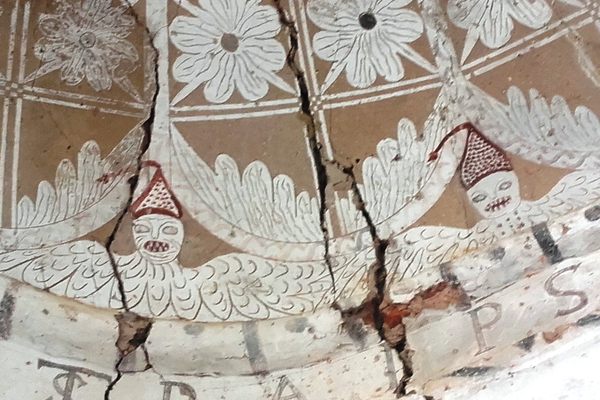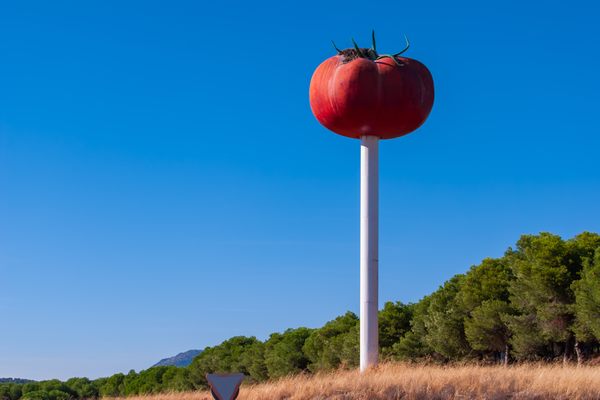Dolmen of Guadalperal
This 7,000-year-old megalithic wonder covered by a Franco-era reservoir emerges in times of drought.
It’s a rare opportunity to be able to contemplate three distinct layers of human history, spanning out over 7,000 years, at one site. But if you’re lucky and wind up near the Spanish town of Peraleda de la Mata during a severe drought, you can appreciate an impressive burial site created by ancient humans, the tragic repercussions of Franco’s civil engineering projects, and the climatic forces that are threatening to disrupt life as we know it.
Due to a historic drought in the summer of 2019, the Dolmen of Guadalperal fully emerged on the receding shoreline of the Valdecañas Reservoir for the first time in over five decades.
The megalithic monument once sat on the banks of the Tagus River. But in 1963, the whole area and its archeological gems were flooded by Franco’s regime to make way for a reservoir.
Archeologists estimate that the dolmen was created in the fifth millennium BC as a burial site for Neolithic Iberians. There are around 100 standing stones, some of which are over six feet high and feature unique engravings.
Know Before You Go
Since the Dolmen of Guadalperal is usually hidden beneath gallons of water, no tourist infrastructure exists to make your visit smooth. The nearest road, which goes through private property, is aptly named the Guadalperal Highway. From there, you hike. It’s not easy. Bring water. Ask locals for help as the shoreline fluctuates. If the reservoir is higher than the freakishly low levels of August 2019, you won’t have access.
If the monument is submerged, you can still ponder what mysteries lie under the Valdecañas lake using nearby towns or hotels as a base. Also worthy of checking out is the “Temple of Marble,” an incredibly well preserved Roman temple that was moved to higher land before the reservoir was built. The rest of the Roman town that housed the temple is also underwater.















Follow us on Twitter to get the latest on the world's hidden wonders.
Like us on Facebook to get the latest on the world's hidden wonders.
Follow us on Twitter Like us on Facebook